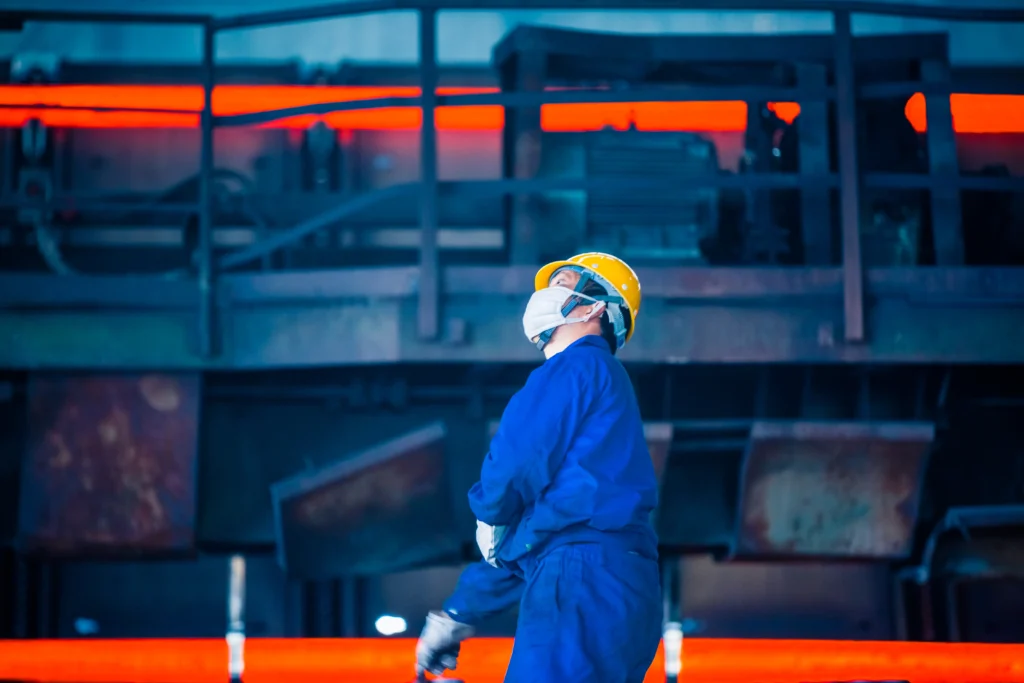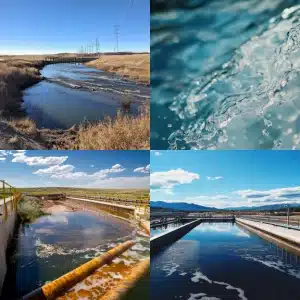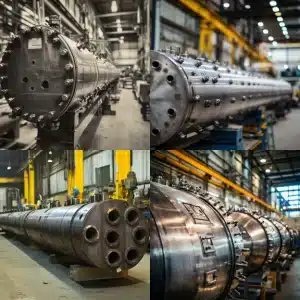
Metallurgical failure analysis identifies the causes of metal component failure and ensures critical equipment like pressure vessels meet safety and performance standards. By integrating this process into prefabrication and working with experts like Red River, industries can prevent costly failures, improve safety, and optimize long-term reliability.
Understanding Why Is Metallurgical Failure Analysis Important
Metallurgical failure analysis helps you pinpoint how and why specific metals and components break down under stress. By unraveling causative factors like cracks, corrosion, or flawed welding, it gives you a clearer path to stronger, safer designs. If you have ever wondered why is metallurgical failure analysis important, you are far from alone. The creep of rust or microscopic fissures may look insignificant at first. However, each small defect can cascade into dramatic problems, especially in industries handling critical equipment such as pressure vessels or other metal component failure. Once you grasp the root causes, you can take confident steps to design better products and avoid high-risk failures.
Below, you will find a closer look at the purpose and high stakes of metallurgical failure analysis. You will also see how it ties to prefabrication, where modules are built in controlled environments, and how a company like Red River LLC applies this approach across multiple sectors to prevent metal component failure. The goal is to help you see the full value of investigating metal breakdowns, from saving on repair costs to preserving safety.
Why is Metallurgical Failure Analysis Important
The core reason metallurgical failure analysis matters is that it reveals hidden red flags before they spiral into catastrophic outcomes. Even a small crack can grow into a full-blown fracture if not inspected promptly. In large-scale operations like oil and gas extraction such fractures risk major leaks, downtime, and steep liabilities. By performing scientific evaluations of materials, including pressure vessel inspection, you can ensure that each component meets industry standards, withstands expected stress, and ultimately delivers the safety margin you need.
You might associate failure analysis strictly with post-incident scenarios. Yet plenty of engineers use it as a preventative tool. Analyzing metal properties, stress tolerance, and potential weak points helps you:
- Anticipate challenges in production or in-service conditions.
- Adhere to strict regulations (including stringent ASME guidelines).
- Avoid large-scale shutdowns.
- Minimize rework caused by overlooked flaws.
For example, in the pressure vessel failure analysis process, each weld and joint undergoes careful inspection, verifying it can endure both internal pressure and thermal cycling. In many cases, a simple microstructural examination might reveal a certain alloy is too brittle for your environment. Armed with that knowledge, you can tweak the alloy composition or improve heat treatments to ensure a more ductile final product.
Knowing these facts upfront, including pressure vessel inspection, spares you the financial blow of emergency repairs (or legal troubles) later. That clarity can reinforce your standing in industries like energy or manufacturing, where reliability anchors your reputation.
Examine Key Industries Using it
When you think about which industries rely on metallurgical failure analysis, it might help to zoom in on sectors with strict performance demands. Agriculture, energy production, chemical processing, and mineral extraction all juggle high temperatures, corrosive substances, and extreme mechanical forces. In such settings, the smallest imperfection can become the largest threat.
- Oil and gas: Pressure vessels that store volatile fluids must remain leak-proof. Failure analysis often uncovers stress cracks caused by repeated temperature cycling or corrosive chemicals.
- Commercial and public works: Large steel frameworks, from bridges to stadiums, call for consistent strength across all joints. Close inspection of metal beams can prevent structural collapse.
- Renewables sector: Wind turbines, solar farms, and hydroelectric systems may seem simple on the surface, but each relies on carefully treated materials that can handle long-term environmental stresses.
Red River LLC traces everything from raw material certification to final product assembly in modular skids, reducing the odds of catastrophic failures.
Recognize Benefits in Prefabrication
Prefabrication involves creating modules, skids, or facility components in controlled workshops rather than assembling them on busy job sites. This approach lowers error rates, speeds up timelines, and cuts costs. Robust quality assurance and thorough metallurgical failure analysis ensure modules arrive with fewer hidden defects.
Advantages include:
- Lower on-site welding and repair needs.
- Reduced exposure hours (less chance for workplace hazards).
- Better control over final installation schedules.
- Fewer unexpected material replacements.
Teams also use advanced modeling software like BIM to spot conflicts in design, though real-world material analysis remains essential. Metallurgical testing digs into microstructures, weld integrity, and overall metal composition, keeping projects on track.
Discover Red River LLC’s Approach
Working with a reliable manufacturer can simplify your path to safe, high-quality results. Red River LLC stands out in part because they integrate metallurgical failure analysis into every stage of product development. They prioritize:
- Specialized software for design optimization: The goal is to confirm each pressure vessel or skid can tolerate specific temperature, stress, and corrosive conditions.
- Full material traceability: Having a line of sight from raw materials to final assembly means your unit meets or exceeds ASME standards.
- ASME-authorized inspection: According to Red River LLC, all pressure vessels undergo a formal sign-off by an authorized inspector to confirm compliance. You receive a comprehensive Quality Control & Material Tracing report.
- Client feedback loop: Lean Six Sigma training is a big part of their work culture, pushing staff to refine processes continually. This includes improvements in how they perform failure analyses.
Their record spans water treatment, gas handling, air solutions, and more. For specialized designs, Red River LLC tailors solutions to unique process parameters. For more details, see pressure vessel inspection and what is metallurgical failure analysis.
Why Is Metallurgical Failure Analysis Important for Long-Term Safety
Metallurgical failure analysis is a forward-looking tool that shields projects from major risks. By identifying weaknesses early, you protect people, preserve budgets, and strengthen equipment longevity.
So, why is metallurgical failure analysis important? In simple terms, it gives you the data to make smarter decisions, spot trouble before it causes financial pain, and improve workplace safety and efficiency.
Take Action with Metallurgical Failure Analysis
Ready to safeguard your operations? Partner with Red River LLC for metallurgical failure analysis at every stage of your project. Contact us today to ensure compliance, safety, and long-term resilience.
Frequently Asked Questions
1. What is metallurgical failure analysis?
Metallurgical failure analysis is the study of metal components to determine why they failed or did not perform as expected.
2. How is metallurgical failure analysis done?
Metallurgical failure analysis is done by examining the material’s structure, composition, mechanical properties, and service conditions to identify the root cause of failure.
3. Can it address corrosion problems in high-moisture environments?
Yes, absolutely. A big part of metallurgical failure analysis involves checking how metals respond to chemical or environmental factors. If you suspect corrosion might be a concern, you can also look into corrosion failure analysis for specialized insights.
4. Will it slow down my production timeline?
Often, it can speed things up in the long run. Identifying material flaws ahead of time avoids costly mid-build surprises. Prefabrication projects especially benefit from thorough failure analysis, as it reduces on-site rework and ensures modules fit together properly.
5. What if my project is not in a high-pressure industry?
Even if your sector is less hazardous, analyzing your materials can spare you from structural splits or performance issues. A hairline fracture in a standard bracket could lead to repeated breakdowns or warranty claims, which ultimately erodes your bottom line.
6. How do I know if a particular component needs metallurgical failure analysis?
If a part handles structural loads, temperature swings, chemical exposure, or dynamic forces, it makes sense to scrutinize its material makeup. Often, you weigh the cost of analysis against the potential cost of failure. Many experts lean on industry codes (like ASME) to decide when it is mandatory.
7. Where can I learn more about the testing procedures?
Start with resources like how is metallurgical failure analysis done. You will see the step-by-step breakdown of sample preparation, microscopic imaging, hardness testing, and data interpretation.
Key Takeaways
- Boost prevention: You can catch and fix potential metal flaws before they lead to catastrophic incidents.
- Uphold standards: Metallurgical failure analysis aligns you with top-tier regulations, such as ASME and industry-specific codes.
- Save resources: Early detection reduces downtime, cost overruns, and emergency repairs.
- Support safer builds: Prefabrication, guided by thorough material checks, leads to fewer site hazards and smooth project timelines.
- Refine continuously: Companies like Red River LLC use Lean Six Sigma and hands-on feedback loops to keep their processes, and your final results, consistently improving.




